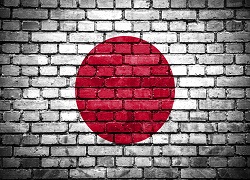 In this addition to our series on indicators’ discussion we’re going to look at the Renko price indicator. Once we eventually discover it as traders, on our experimental journey as we play around with many indicators in the library that comes with our free broker charting packages, we notice Renko has the peculiar characteristic of looking like an extremely difficult concept to grasp. And yet compared to candlestick patterns, where we are concerned with the OHLC; the open, high, low and close of the candle, with Renko the simplicity couldn’t be more obvious. We are only concerned with one aspect singularly – price. If price were to remain static for days then in theory and practice no new ‘bricks’ would be added which is a completely different concept compared with, for example, our classic candlestick metric…
In this addition to our series on indicators’ discussion we’re going to look at the Renko price indicator. Once we eventually discover it as traders, on our experimental journey as we play around with many indicators in the library that comes with our free broker charting packages, we notice Renko has the peculiar characteristic of looking like an extremely difficult concept to grasp. And yet compared to candlestick patterns, where we are concerned with the OHLC; the open, high, low and close of the candle, with Renko the simplicity couldn’t be more obvious. We are only concerned with one aspect singularly – price. If price were to remain static for days then in theory and practice no new ‘bricks’ would be added which is a completely different concept compared with, for example, our classic candlestick metric…
Background and origins of Renko ‘bricks’
Renko is a type of price charting indicator which was developed by Japanese Chartists which differs considerably from other price indicators as Renko is only concerned with price movement and nothing else, time and volume are not included in the calculation. The word Renko is named for the Japanese word for bricks “renga”. A renko chart is constructed by placing a brick in the next column once the price surpasses the top or bottom of the previous brick by a predefined amount.
On plain unadjusted charts hollow bricks are used when the direction of the trend is up (bullish), whilst black bricks are used when the trend is down (bearish). This type of chart has an unintended consequence as it’s highly effective for traders to identify key support/resistance levels. Buy and sell signals are generated when the direction of the trend changes and the bricks change colours.
Three key benefits of Renko price charting;
1. Renko charts filter out the noise of wicks and are based solely on price without time.
2. Renko charts clearly indicate support and resistance.
3. Can be used to confirm trends or can be traded on their own.
Absolute points on Renko charting
With the “Absolute Points” method, we specify the size of each brick on the chart in points, we might set this at ten points or twenty. The main advantage of this simple method is that it is very easy to understand and predict when new bricks will appear. The disadvantage is that the point value needs to be different for high priced securities than for low priced securities. We may wish choose a value that is (roughly) 1/10th of the average price of the security during the time frame you want to chart it, such as 15 for cable – USD/GBP.
Renko charts therefore have a pre-determined Brick Size that are very simply used to determine when new bricks are added to the chart. If prices move more than the brick size above the top (or below the bottom) of the last brick on the chart, a new brick is added in the next chart column. Hollow bricks are added if prices are rising. Black bricks are added if prices are falling. Only one type of brick can be added per unit of increase. Bricks are always with their corners touching and no more than one brick may occupy each chart column.
It’s important to note that prices may exceed the top (or bottom) of the current brick. Again, new bricks are only added when prices completely fill the brick. For example, for a 15-point chart, if prices rise from 100 to 115, the hollow brick that goes from 100 to 115 is added to the chart but the hollow brick that goes from 100 to 105 isn’t. The Renko chart will give the impression that prices stopped at 100. It’s also important to remember that Renko charts may not change for several time periods. Prices have to rise or fall significantly for bricks to be added.
Hollow bricks are bullish, black bricks are bearish – that’s the simplest interpretation of Renko charts. Renko charts may be most useful in identifying trends and trend direction. Because they filter out moves less than the brick size, trends can (in theory) be much easier to spot and follow. In order to avoid whiplash periods, some people wait until 2 or 3 bricks appear in a new direction before taking a position.
How to Trade Using Renko as a trading method
A simple system could be used in which if we have 2 bricks of the same colour establishes the possible beginning of a trend that we could use as a trigger to either go long or short. Alternatively one brick of the opposite colour ends the trend and we would exit the trade. Many traders also prefer to add another indicator to their simple Renko chart, perhaps the RSI or CCI, or the stochastic lines in order to determine oversold and overbought conditions. In this way we’ll be looking for the Renko bricks to stop making higher highs or lower lows and begin consolidating before falling or rising.





